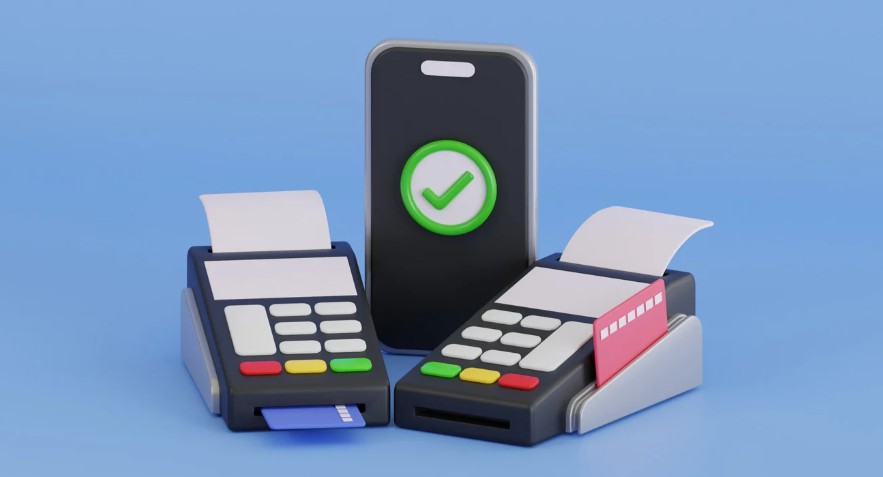
What Customers Expect from a Modern Payment Experience Today?
Think about the last time you abandoned an online shopping cart. Chances are, it wasn’t because you changed your mind about the product – it was probably because the checkout process was too complicated, too slow, or just didn’t feel secure enough.
You’re not alone in this. Studies show that nearly 70% of online shopping carts get abandoned, and payment friction is one of the biggest culprits. When customers hit roadblocks during payment, they simply go elsewhere. It’s that simple.
Here’s what’s really interesting: the payment experience has become just as important as the product itself. A customer might love what you’re selling, but if paying for it feels like a hassle, they’ll find somewhere else to buy it. This shift has caught many businesses off guard.
What’s Changed in Customer Expectations?

Remember when entering your credit card details manually for every purchase was normal? Those days are long gone. Today’s customers have been spoiled by companies like Amazon, Apple, and Google, who’ve set the bar incredibly high for what a smooth payment experience should look like.
The expectations now include:
- One-click purchasing options
- Saved payment methods that actually work across devices
- Multiple payment options at checkout
- Instant transaction confirmations
- Zero hidden fees or surprise charges
What makes this challenging is that these aren’t nice-to-have features anymore – they’re the minimum standard. If your payment process doesn’t meet these expectations, customers notice immediately.
The Four Pillars of Modern Payment Experience
Speed: Because Nobody Has Time to Wait
Let’s be honest – we live in an instant world. When someone clicks “buy now,” they expect things to happen fast. We’re talking seconds, not minutes. This isn’t just about the final transaction going through; it’s about every step of the process feeling quick and responsive.
I’ve watched customers literally tap their fingers waiting for a payment page to load. After about 3 seconds, you can see them getting impatient. After 10 seconds, many will close the tab and go somewhere else. That’s the reality businesses are dealing with.
Mobile payments have really raised the stakes here. When you can buy something with Apple Pay in under 5 seconds, suddenly a checkout process that takes 2 minutes feels ancient. Customers have been trained to expect this level of speed everywhere.
What speed really means in practice:
- Payment pages that load in under 2 seconds
- Authentication that happens instantly
- Immediate confirmation when a payment goes through
- No waiting around wondering if the transaction worked
Security: Building Trust Without Creating Friction

Here’s where things get tricky. Customers want their money to be completely secure, but they also don’t want to jump through hoops to prove they’re legitimate buyers. Finding that balance is where many businesses struggle.
The good news is that security technology has gotten much smarter. Instead of asking customers to remember complicated passwords or answer security questions, modern systems use things like fingerprint scanning or facial recognition.
These methods are actually more secure than traditional passwords, and they’re definitely more convenient.
What customers really want is security that works behind the scenes. They want to know their information is protected, but they don’t want to think about it. The best payment experiences make security invisible to the customer while keeping everything locked down tight.
Signs of trustworthy payment security:
- Biometric authentication options (fingerprint, face ID)
- Clear security badges and certifications
- Partnerships with recognized financial institutions
- Transparent fraud protection policies
Variety: One Size Doesn’t Fit All
Not everyone pays the same way, and smart businesses have figured this out. Some customers love using their phone to pay for everything. Others prefer their trusty credit card. Younger shoppers might want to split payments over time, while older customers stick with bank transfers.
The customer payment experience needs to accommodate all these preferences without overwhelming anyone. It’s a balancing act between offering enough options to keep everyone happy and keeping the interface clean and simple.
Regional differences also play a huge role here. Payment methods that are popular in one country might be completely unknown in another. If you’re selling internationally, this becomes even more complex.
Flexibility: Adapting to How People Actually Shop
Here’s something many businesses miss: customers don’t shop in a straight line anymore. Someone might start looking at products on their phone during lunch, add items to their cart on their laptop at home, and then complete the purchase on their tablet while watching TV.
The payment experience needs to flow smoothly across all these different touchpoints. Customers shouldn’t have to start over just because they switched devices.
Their saved payment methods should work everywhere, and their shopping progress should be maintained regardless of how they access your site.
Advanced Features That Make the Difference
Smart Personalization That Actually Works
The best online payment experiences feel like they know you. Not in a creepy way, but in a helpful way. When you return to a site and it remembers your preferred payment method, suggests the right option based on your purchase amount, or automatically fills in your details – that’s personalization done right.
This kind of smart personalization requires some serious technology working behind the scenes. AI systems analyze your buying patterns, location, and previous choices to make intelligent recommendations.
For example, they might suggest using a specific credit card for international purchases or recommend a buy-now-pay-later option for bigger ticket items.
The key is making these features feel helpful rather than intrusive. Customers appreciate when technology makes their lives easier, but they get uncomfortable when it feels like you know too much about them.
Examples of helpful payment personalization:
- Suggesting payment methods based on purchase location
- Remembering preferred payment timing (immediate vs. deferred)
- Prioritizing frequently used payment options
- Offering relevant financing options based on purchase amount
Integration That Just Makes Sense

The days of payment systems existing in isolation are over. Today’s customers expect their payment experience to connect seamlessly with everything else – their loyalty points, shipping preferences, and even their customer service history.
Think about how frustrating it is when you have to re-enter the same information multiple times during a single purchase. Modern payment systems should talk to other parts of a business’s technology stack to eliminate this kind of redundancy.
Cross-platform continuity is huge here too. Customers might start shopping on their phone during their commute, continue on their computer at work, and finish the purchase on their tablet at home. The payment experience should flow smoothly through all these transitions.
Transparency That Builds Trust
Nobody likes surprise fees. One of the fastest ways to damage a customer payment experience is to spring unexpected charges on people right before they complete their purchase. Customers want to know exactly what they’re paying for, including any processing fees, taxes, or shipping costs.
The best payment systems show all costs upfront and explain them clearly. They don’t hide fees in fine print or use confusing language to obscure charges. This transparency builds trust and reduces the likelihood of payment disputes later.
Real-time updates during the payment process also help build confidence. Customers want to know their payment is being processed, when it’s been approved, and when they can expect to receive their purchase. These updates reduce anxiety and create a more positive overall experience.
Advanced Security That Stays Invisible
Modern payment security is like a good bodyguard – it’s there when you need it, but you barely notice it most of the time. The most sophisticated fraud detection systems work continuously in the background, analyzing transaction patterns and flagging suspicious activity without interrupting legitimate purchases.
Biometric authentication has become a game-changer here. Instead of trying to remember complex passwords, customers can simply use their fingerprint or face to verify their identity. It’s faster, more secure, and much more convenient than traditional methods.
Multi-factor authentication systems have also gotten smarter about when to ask for additional verification. Instead of requiring multiple steps for every transaction, they can assess risk levels and only add extra security measures when necessary.
The Real-World Impact of Getting It Right

Let me share what happens when businesses nail the payment experience. Customer satisfaction scores go up, shopping cart abandonment rates drop significantly, and repeat purchase rates increase. It’s not just about making the transaction work – it’s about creating an experience that customers actually enjoy.
Companies that invest in superior payment experiences often see measurable business results. They reduce customer service calls related to payment issues, decrease the time and cost associated with failed transactions, and build stronger customer loyalty over time.
The flip side is equally important to understand. Businesses with poor payment experiences don’t just lose individual sales – they lose customers entirely.
In today’s competitive market, there’s always another option available, and customers won’t hesitate to use it if your payment process frustrates them.
Looking Forward: What Comes Next?
The payment experience will continue to change as technology advances and customer expectations keep rising. We’re already seeing experiments with voice-activated payments, augmented reality shopping experiences, and even more sophisticated personalization capabilities.
The businesses that succeed will be those that view payment processing not as a necessary evil, but as a competitive advantage. They’ll invest in understanding their customers’ needs, implementing the right technology solutions, and continuously improving their payment experience based on feedback and performance data.
What won’t change is the fundamental truth that customers want their payment experience to be fast, secure, convenient, and trustworthy. The specific methods and technologies might continue to change, but these core expectations will remain constant.
Smart businesses will build their payment strategies around these enduring principles while staying flexible enough to adapt to new innovations and changing customer preferences.
Author Profile
- Blogger by Passion | Contributor to many Business Blogs in the United Kingdom | Fascinated to Write Blogs in Business & Startup Niches |
Latest entries
 BusinessOctober 22, 2025What Obligations Do Employers Have to Lone Workers?
BusinessOctober 22, 2025What Obligations Do Employers Have to Lone Workers? BusinessAugust 13, 20255 Ways of Getting Paid for Sharing Your Opinions and Reviews
BusinessAugust 13, 20255 Ways of Getting Paid for Sharing Your Opinions and Reviews FinanceAugust 1, 2025Best 7 Crypto Cards to Use in 2025
FinanceAugust 1, 2025Best 7 Crypto Cards to Use in 2025 TechnologyMay 28, 2025What Customers Expect from a Modern Payment Experience Today?
TechnologyMay 28, 2025What Customers Expect from a Modern Payment Experience Today?

